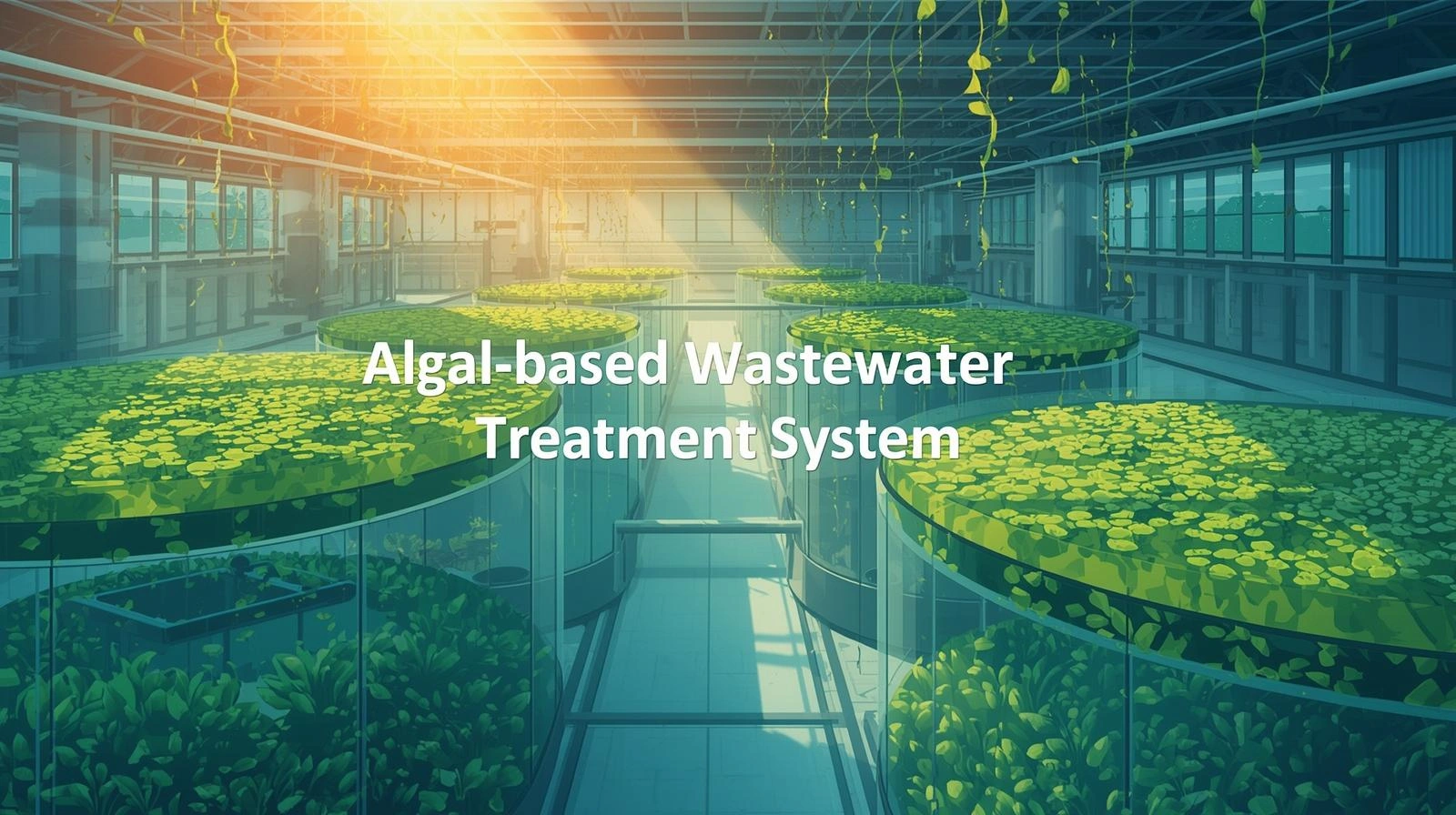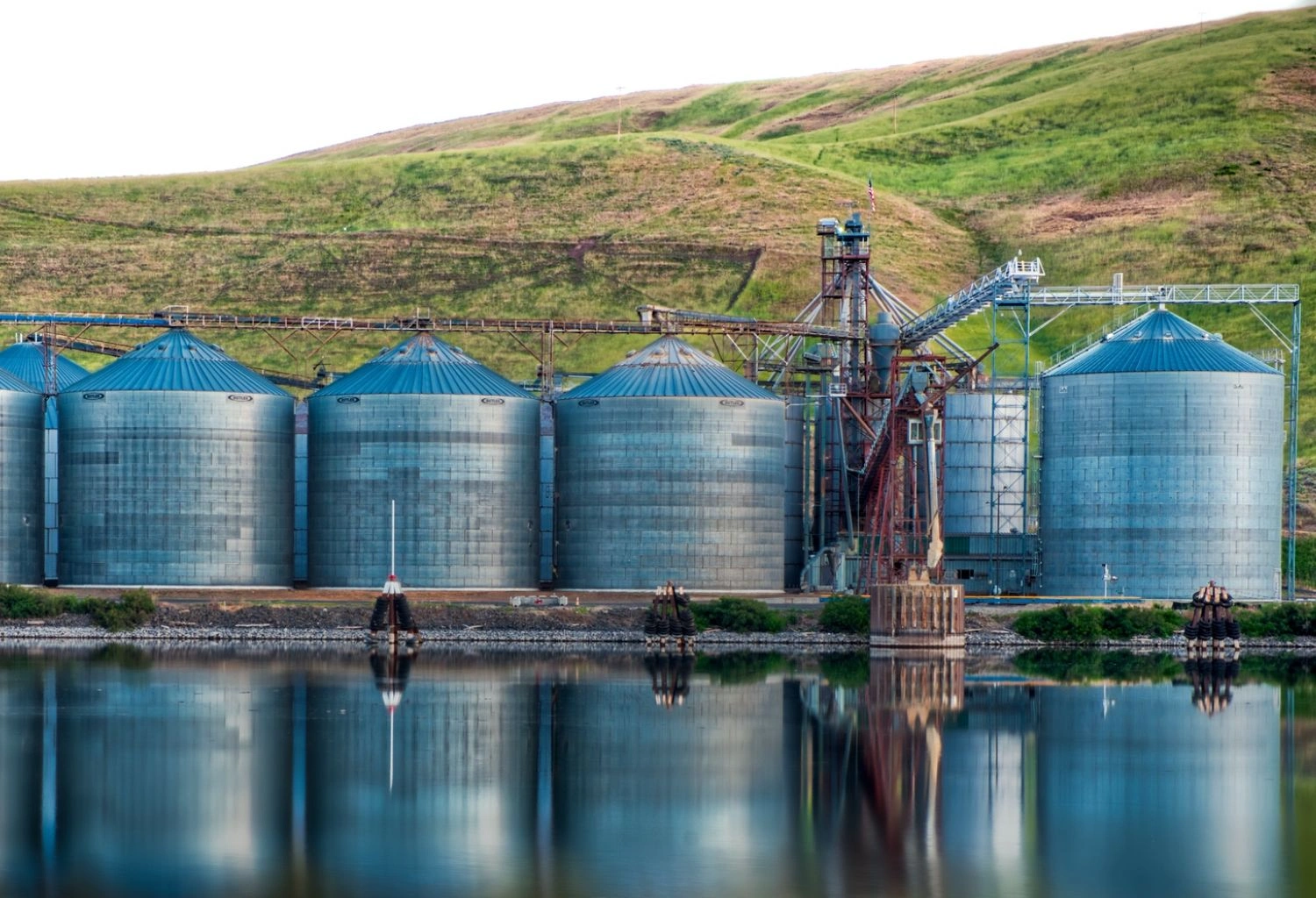Have you ever wondered if algae could be the key to cleaner water and more sustainable wastewater treatment? While algae are often associated with ponds and water bodies, they hold incredible potential for cleaning our wastewater. Algae-based wastewater treatment systems are emerging as an innovative, eco-friendly solution to one of the world’s most pressing environmental issues—water pollution.
In this blog, we’ll explore how algae are being used in wastewater treatment processes, the benefits of algae-based filtration, and why this approach is gaining popularity as a natural wastewater solution. By looking at the science behind algae water purification, we’ll uncover how this natural process is transforming the way we approach wastewater treatment and promoting a more sustainable future.
What Are Algal-Based Wastewater Treatment Systems?
Algal-based wastewater treatment systems use algae to treat and purify wastewater by harnessing their natural ability to absorb nutrients, toxins, and other pollutants found in water. These systems typically involve cultivating algae in wastewater, where they absorb nutrients like nitrogen and phosphorus, which are commonly found in excess in sewage and industrial effluents.
Algae thrive in nutrient-rich environments, so using them for wastewater treatment helps to remove these harmful elements while also providing other ecological benefits. Through photosynthesis, algae convert carbon dioxide into oxygen, improving the water’s quality and helping to restore ecosystems affected by pollution.
These systems can be implemented in various forms, such as open ponds, closed photobioreactors, or algal biofilm reactors, each designed to optimize algae’s natural purification processes while minimizing the environmental footprint of traditional treatment methods.
How Do Algae Purify Water in Wastewater Treatment?
Algae purify water in wastewater treatment systems by engaging in natural biological processes. Here’s how it works:
- Nutrient Uptake: Algae are naturally efficient at absorbing excess nutrients, particularly nitrogen and phosphorus, which are the primary contributors to wastewater treatment in wastewater. These nutrients, often from fertilizers, detergents, or sewage, can cause eutrophication, leading to harmful algal blooms in natural water bodies. Algae in wastewater treatment systems absorb these nutrients, helping prevent eutrophication and improving water quality.
- Oxygen Production: Through the process of photosynthesis, algae produce oxygen, which benefits the entire treatment system. Oxygen helps aerobic bacteria break down organic matter in wastewater, aiding the biological treatment of pollutants. This process creates a balanced environment that not only purifies the water but also enhances the overall treatment efficiency.
- Toxin Removal: Algae have been shown to absorb and detoxify various harmful chemicals in wastewater, including heavy metals and organic pollutants. This ability helps to further purify the water and remove contaminants that could otherwise pose risks to both human health and the environment.
- Carbon Sequestration: Algae help sequester carbon dioxide from the atmosphere, which is beneficial for addressing climate change. In wastewater treatment, this reduces the carbon footprint of the treatment process by absorbing carbon emissions during the algae’s growth phase.
Why Are Algae-Based Filtration Systems Considered Eco-Friendly?
Traditional wastewater treatment systems often rely on energy-intensive processes and chemical treatments that can be harmful to the environment. In contrast, algae-based filtration offers an eco-friendly, sustainable alternative. Here’s why algae-based treatment systems are gaining attention as a greener solution:
- Low Energy Consumption: Algae-based wastewater treatment requires minimal energy input compared to conventional methods. Algae naturally thrive in nutrient-rich environments, and their filtration processes rely primarily on sunlight and water to grow, making these systems significantly more energy-efficient.
- No Chemical Use: Unlike traditional treatment methods, which often require harsh chemicals like chlorine or chlorine dioxide for disinfection, algae-based systems can purify water without the need for chemical additives. This reduces the risk of toxic byproducts and pollution caused by chemical treatments.
- Natural Wastewater Solutions: Algae-based systems leverage the natural processes of photosynthesis and nutrient uptake, making them an inherently natural wastewater solution. This reduces the environmental impact of wastewater treatment and promotes a more holistic, sustainable approach to managing water resources.
- Reduction in Greenhouse Gas Emissions: Because algae help sequester carbon dioxide and require little energy to grow, algae-based systems can significantly reduce greenhouse gas emissions compared to conventional wastewater treatment methods, aligning with global efforts to combat climate change.
How Does Algal-Based Wastewater Treatment Benefit Ecosystems?
Algal-based wastewater treatment systems don’t just purify water—they also contribute positively to the surrounding ecosystem. By removing excess nutrients and pollutants from wastewater, these systems help restore the natural balance of aquatic environments. Here’s how:
- Preventing Eutrophication: Excessive nitrogen and phosphorus in wastewater often lead to eutrophication in water bodies, which results in oxygen depletion, harmful algal blooms, and the loss of biodiversity. By removing these nutrients, algae-based systems prevent the formation of harmful algal blooms and protect local aquatic ecosystems.
- Supporting Biodiversity: The oxygen produced by algae through photosynthesis helps create a more oxygen-rich environment in the treated water. This supports the survival of aquatic life and promotes biodiversity, creating healthier ecosystems.
- Soil Fertilizer: Once algae have absorbed nutrients from wastewater, they can be harvested and used as a natural fertilizer for agricultural purposes. This creates a circular economy, where the waste is transformed into a valuable resource, reducing the need for synthetic fertilizers and promoting sustainable agriculture.
- Reduced Contaminant Levels: Algae’s ability to absorb and detoxify harmful substances, including heavy metals, means that algae-based systems help ensure that treated water meets safety standards before being released back into the environment. This contributes to healthier ecosystems and cleaner water sources for local communities.
What Are the Challenges of Algae-Based Wastewater Treatment?
While algae-based wastewater treatment systems offer numerous benefits, they do come with a set of challenges. Here are some of the limitations to consider:
- Scale and Space Requirements: Algae require a significant amount of space and sunlight to grow, especially in open pond systems. In densely populated urban areas or regions with limited land availability, implementing large-scale algae-based systems can be challenging.
- System Maintenance: Although algae systems generally require less maintenance than traditional treatment methods, they still require regular monitoring and management to ensure optimal conditions for algae growth. Factors such as temperature, pH levels, and nutrient availability must be carefully controlled to prevent system failure.
- Harvesting Algae: After algae have absorbed nutrients and purified the water, they need to be harvested and processed. This can be a labor-intensive process, and finding efficient ways to harvest and utilize algae is a key area of ongoing research.
- Climate Limitations: Algae-based systems rely on sunlight for photosynthesis, so they may be less effective in regions with limited sunlight or in colder climates. However, advances in photobioreactor technology and closed systems are helping mitigate these challenges by providing controlled environments for algae growth.
Wastewater Treatment System
Where Are Algae-Based Wastewater Treatment Systems Being Implemented?
Algal-based systems are being used in a variety of settings around the world, from small-scale decentralized treatment plants to large municipal systems. Here are some examples:
- Decentralized Treatment Systems: Algae-based systems are ideal for small communities or rural areas where traditional treatment infrastructure is lacking. These systems can be built in small ponds or bio-reactors to treat wastewater locally, reducing the need for expensive transportation and centralized treatment.
- Industrial Applications: Industries that produce high volumes of wastewater, such as food processing or textile manufacturing, can also benefit from algae-based systems. By using algae to treat their effluent, these industries can reduce pollution, meet regulatory standards, and minimize costs associated with chemical treatments.
- Municipal Systems: Larger-scale algae-based treatment plants are being integrated into municipal systems, where they can treat large volumes of wastewater in an eco-friendly manner. These systems are increasingly being used in countries and regions that prioritize sustainability and environmental protection.
FAQs About Algal-Based Wastewater Treatment Systems
1. What is algae-based wastewater treatment?
Algae-based wastewater treatment uses algae to purify water by absorbing nutrients and pollutants, producing oxygen through photosynthesis, and detoxifying harmful substances. It’s an eco-friendly, sustainable approach to wastewater management.
2. How does algae purify wastewater?
Algae purify wastewater by absorbing excess nitrogen, phosphorus, and other nutrients, which helps to prevent eutrophication. They also produce oxygen, which supports the biological breakdown of organic matter and enhances overall water quality.
3. What are the environmental benefits of algae-based wastewater treatment?
Algae-based systems are eco-friendly because they require minimal energy, eliminate the need for chemical treatments, and reduce greenhouse gas emissions. Additionally, they help restore ecosystems by preventing nutrient overload and supporting biodiversity.
4. Can algae-based systems be used for industrial wastewater?
Yes, algae-based systems can effectively treat industrial wastewater, especially in industries that produce nutrient-rich effluent, such as food processing, textiles, and agriculture. These systems offer a sustainable, low-cost alternative to traditional treatments.
5. Are there any challenges to algae-based wastewater treatment?
Some challenges include the space requirements for algae cultivation, the need for regular system maintenance, and harvesting algae efficiently. Additionally, algae-based systems may be less effective in areas with limited sunlight or cold climates.
Conclusion
Algae water purification is an innovative, sustainable solution that combines the natural power of algae with cutting-edge technology to provide cleaner water with minimal environmental impact. By using algae-based filtration, these systems offer a natural way to remove pollutants, reduce nutrient overload, and support biodiversity, all while reducing the energy consumption and chemical use associated with traditional wastewater treatment methods.


